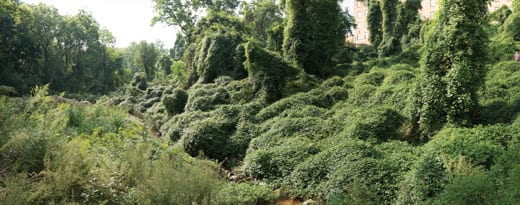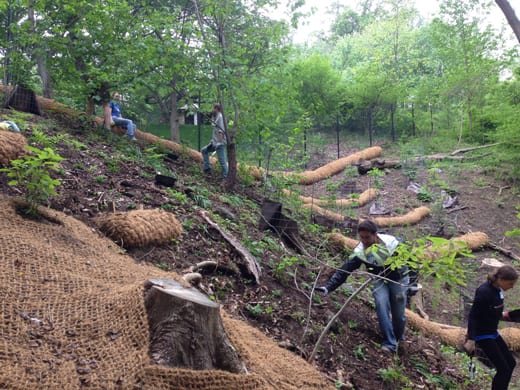BEATRIX FARRAND’S DUMBARTON OAKS WILD GARDEN—REVEALED
The section of land near Rock Creek Parkway in Washington D.C. known as Dumbarton Oaks Park is also one of landscape architect Beatrix Farrand’s masterpieces, the wild garden she designed for the Dumbarton Oaks estate during the 1920s and 1930s. Over the last ninety years, this Farrand garden has become increasingly overgrown, as invasive species multiply, trees mature, and erosion takes its toll. Visitors to the area are largely unaware of its existence, much less its historical importance as a designed space.

Today, Farrand’s masterpiece is slowly re-emerging, thanks to the efforts of the Dumbarton Oaks Park Conservancy. In partnership with the National Park Service, the group launched its Signature Project, a joint effort to restore the 27-acre garden to its former glory as Farrand’s “crowning achievement.” Since 2010, the project has painstakingly cleared areas, restored meadows, re-introduced plantings, and devised long-term solutions to the issues of future maintenance. The landscape that Farrand designed for Robert and Margaret Bliss as a place reflecting “the illusion of country life,” is slowly returning for all to enjoy and explore.

Adrian Higgins, gardening columnist for the Washington Post, recently visited the park and reported on the Conservancy’s impressive progress.
For more about Dumbarton Oaks and Beatrix Farrand read the preservation profile Dancing into the Future: Dumbarton Oaks Park (2012), or A Genius for Place by Robin Karson, or view the online gallery from the accompanying exhibition.